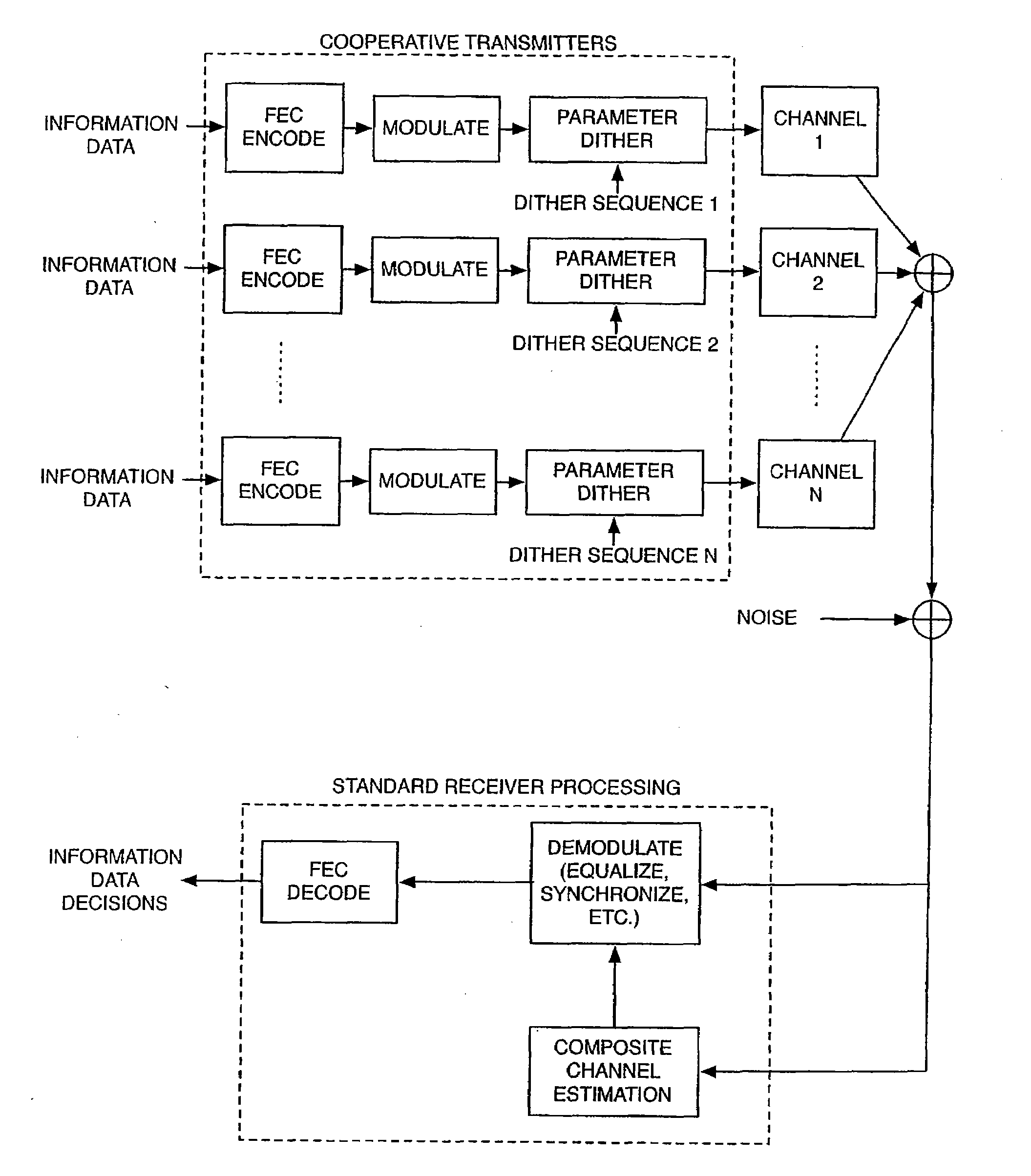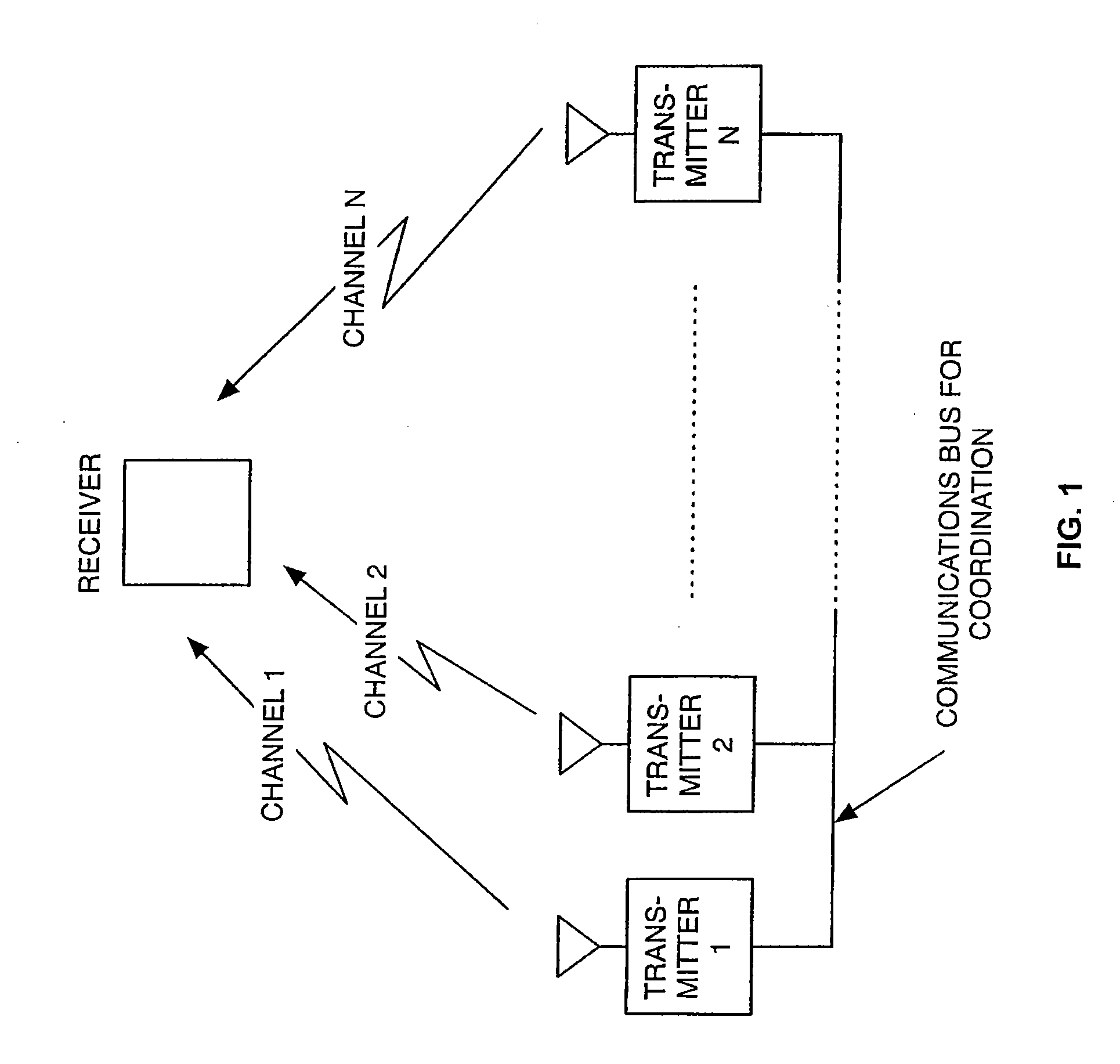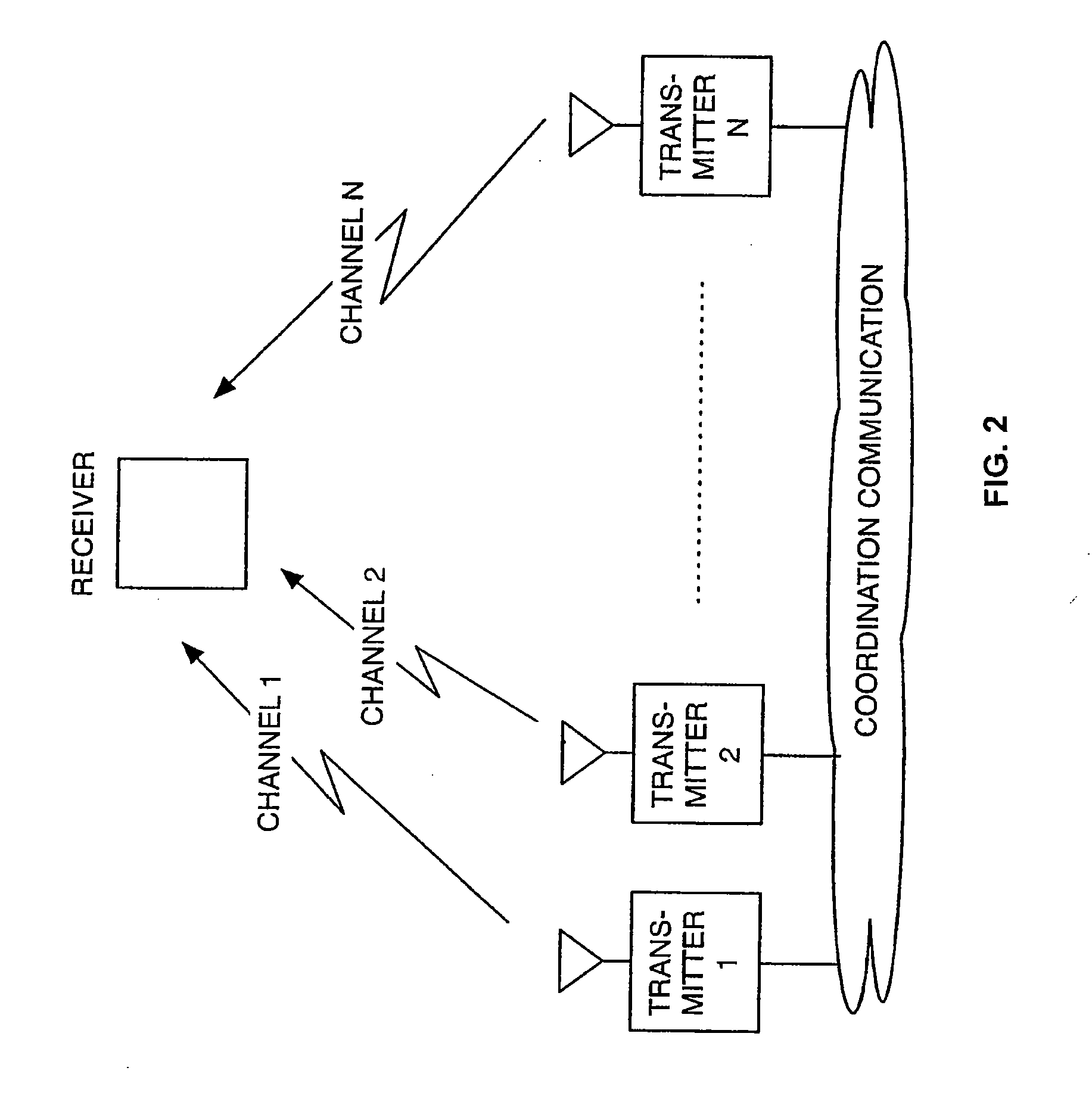Method and System for Cooperative Communications with Minimal Coordination
a cooperative communication and coordination technology, applied in pulse techniques, site diversity, coding, etc., can solve the problems of preventing reliable communication and staying at a low snr, and achieve the effects of enhancing data reliability, enhancing data reliability, and confirming the correctness of received data
- Summary
- Abstract
- Description
- Claims
- Application Information
AI Technical Summary
Benefits of technology
Problems solved by technology
Method used
Image
Examples
Embodiment Construction
[0046]As a simple example of the benefits of the proposed approach, consider two cooperating transmitters, each sending a symbol sequence s[k], where k is the time index. Under a simple additive white Gaussian noise (AWGN) channel model, the composite signal model is
z[k]={A[1,k]exp(jP[1,k])+A[2,k]exp(jP[2,k])}s[k]+w[k] (1)
where A[n,k]exp(jP[n,k]) is the complex baseband channel response from transmitter n to the receiver in amplitude-phase form (amplitude A[n,k] and phase P[n,k]), j is the square-root of −1, exp(.) is the exponential function, and w[k] is AWGN. Note that this may be expressed as
z[k]=C[k]exp(jQ[k])s[k]+w[k] (2)
where C[k] is the composite channel amplitude and Q[k] is the composite channel phase. The instantaneous SNR of the composite signal is proportional to the square of C[k].
[0047]First consider the case of naïve uncoordinated cooperative communications. In this case, the complex channel gains are not varying with time, i.e., A[n,k]exp(jP[n,k])=A[n] exp(jP[n]). ...
PUM
 Login to View More
Login to View More Abstract
Description
Claims
Application Information
 Login to View More
Login to View More - R&D
- Intellectual Property
- Life Sciences
- Materials
- Tech Scout
- Unparalleled Data Quality
- Higher Quality Content
- 60% Fewer Hallucinations
Browse by: Latest US Patents, China's latest patents, Technical Efficacy Thesaurus, Application Domain, Technology Topic, Popular Technical Reports.
© 2025 PatSnap. All rights reserved.Legal|Privacy policy|Modern Slavery Act Transparency Statement|Sitemap|About US| Contact US: help@patsnap.com



